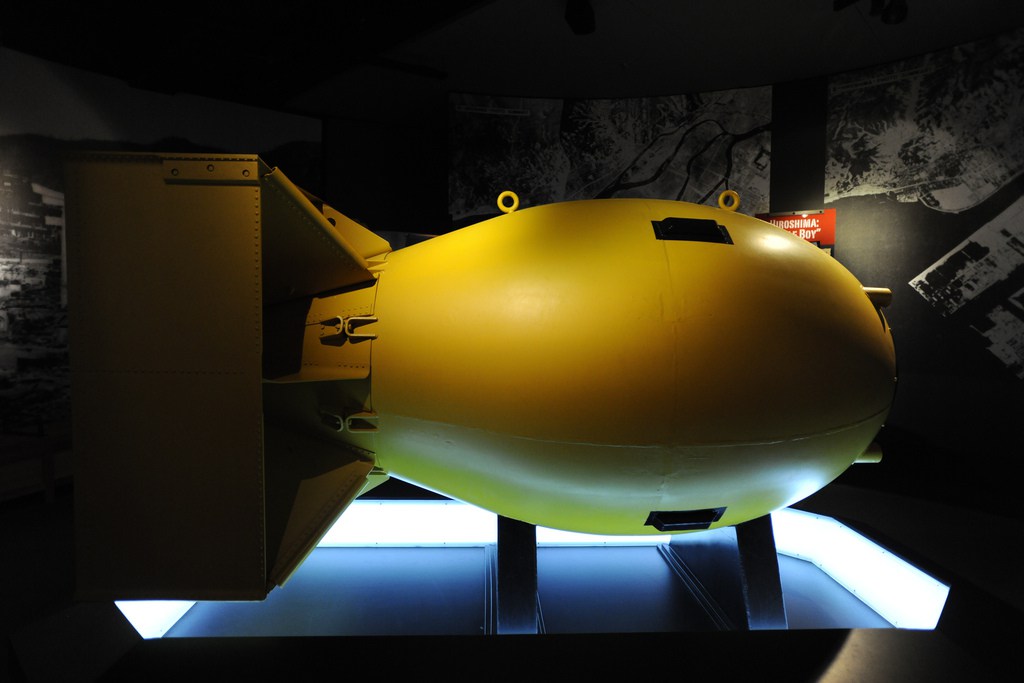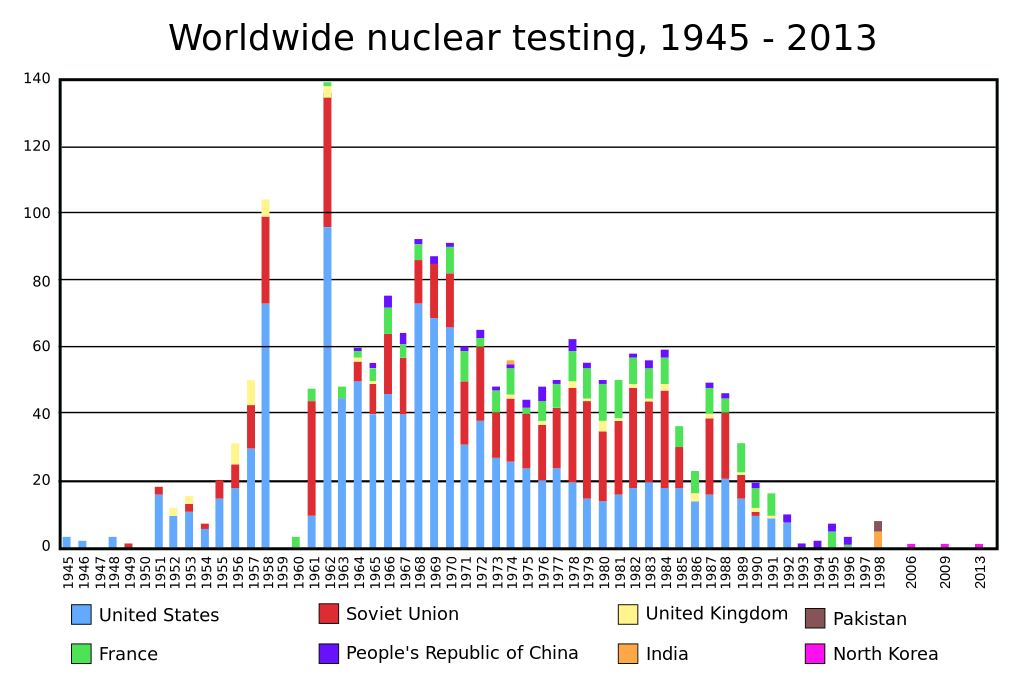The January 6, 2016 ‘thermonuclear’ test by the Democratic People’s Republic of Korea (DPRK) is the fourth in the series of nuclear tests beginning in 2006. Is it a quest to attain credible deterrence against USA, Let’s see it!
Let’s first go into some North Korean nuke history.
What has North Korea tested in the past?
- North Korea’s tests in 2006 and 2009 are thought to have been plutonium fission devices, but speculation was rife that its 2013 test was of an uranium-enriched device, though this has never been confirmed. <In general, uranium devices are much more difficult to fabricate and operate>
- A test based on a uranium device would spell new dangers because weapons-grade plutonium enrichment happens in large facilities
- That are easier to spot and uranium enrichment uses many, possibly small, centrifuges that can be hidden away
- North Korea has also depleted its stocks of weapons-grade plutonium but has plentiful reserves of uranium ore
- The fusion/H-bomb finds root in the history, as more powerful and technologically advanced than atomic weapons, such as those that devastated 2 Japanese cities in World War II
- H-bombs use fusion, the merging of atoms to unleash massive amounts of energy, whereas atomic bombs use nuclear fission, or the splitting of atoms.

What is Nuclear fusion?
- In physics, nuclear fusion is the process by which multiple nuclei join together to form a heavier nucleus
- It is accompanied by the release or absorption of energy depending on the masses of the nuclei involved.
- In a hydrogen bomb, 2 isotopes of hydrogen, deuterium and tritium are fused to form a nucleus of helium and a neutron
- This fusion releases 17.6 MeV of energy. Unlike nuclear fission, there is no limit on the amount of the fusion that can occur
Let’s get back to learn some changing equations in new world order.
Is it quest to attain deterrence against United States?
- The supreme leader Kim Jong Un (KJU) had warned that, if aggressors dare to provoke us, even to a slight degree, we will never
tolerate it, and respond resolutely with a merciless sacred war of justice, a great war for national reunification - It declared: “The United States has persisted in ignoring our just demand for replacing the Armistice Agreement with a separate pact to remove the danger of war, ease tension and create a powerful environment in the Korean peninsula. The Korean Armistice Agreement is the armistice which ended the Korean War. It was signed between U.S. and North Korea in 1953.
- Instead, it has clung to its anachronistic policy hostile towards the DPRK, escalating the tension and egging its vassal forces on to stage a ‘human rights’ racket against the country
- In May 2015, Pyongyang had announced that it had successfully tested a Submarine Launched Ballistic Missile (SLBM). However, South Korean experts had treated this claim with considerable scepticism
- Whether the most recent North Korean test was that of a Hydrogen Bomb will be known after a while, but the objective was miniaturisation of the system so that the nuclear weapon can be mounted on a missile
- North Korea has made it known that it wants recognition by the world community as a nuclear weapon power and no amount of external pressure would force it to pause in that quest
What was the Global Reaction?
- The UN Security Council condemned the nuclear test, declared that it is a ‘clear violation’ of its previous resolutions, and pledged to pursue new sanctions against North Korea
- USA, South Korea and Japan have agreed to work together to forge a united and strong international response to North Korea’s reckless behaviour
- Japan hinted at some unilateral measures, include strengthening of the anti-missile defence systems protecting Japan from a North Korean attack
Who is in the real position to apply pressure on North Korea?
- Only China is in a position to apply some credible pressure on North Korea since 88 per cent of North Korea’s foreign trade is with China
- According to the South Koreans, China has been applying the existing UN sanctions against North Korea faithfully and the export of about 900 dual-use items has been prohibited to that country
- China is comfortable with strategic ambiguity about the nuclear status of North Korea
- But the insistence of an open declaration by the North of its Nuclear Weapon Power status would disrupt its strategic calculations in the region as the response from Japan could upset the regional power equation
- Seoul expects China to do more to denuclearise North Korea particularly in view of the rapidly warming ROK-China relations
Has North Korea’s approach towards South Korea changed?
- In the midst of heightened tensions, there are signs that North Korea is working with the aim of driving a wedge between the United States and South Korea
- For which it is pursuing 2 independent policies – one of nuclearisation and acceptance as a nuclear weapons power
- The second of not upsetting the apple cart with South Korea and continue with the current policy of no peace – no war

Conclusion on sidelines
- Analysing the events of the past 1 year, it would be fair to conclude that Kim Jong Un has firm control over all the levers of power in North Korea, including the military
- The reclusive country would continue on the course set by Kim II Sung and Kim Jong II, pursuing a policy of ‘Military First’, the ‘Juche’ concept of self-reliance and seeking effective nuclear strike capability against the United States
- Juche is a political philosophy, became the official autarkic state ideology of the DPRK in 1972 Although foreign scholars often describe juche as “self-reliance,” the true meaning of the term is much more nuanced.
- The peninsula would continue to be divided as neither side is keen on unification despite their public protestations in favour of reuniting the long-divided country
- The paramount objective of the DPRK leadership continues to be the survival of the regime and its politico-economic system, and it is unlikely to allow tensions with South Korea or the United States to come to a point that would lead to hostilities
Whatever the truth of this test, for diplomacy, observers say it dashes any hopes of North Korea returning to stalled talks involving the US, Russia, China and others.
Published with inputs from Arun


